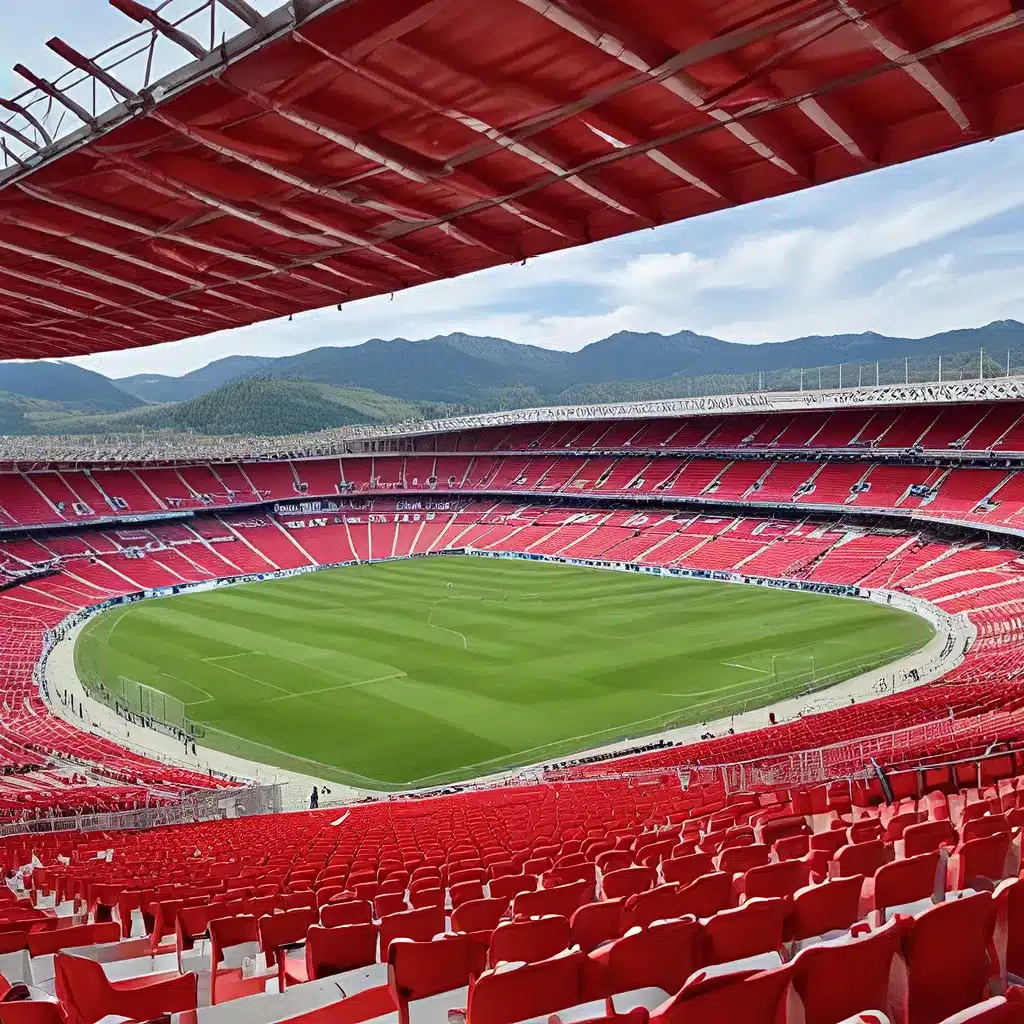
Located in the heart of Bilbao, Spain, the San Mamés Stadium is a true architectural and cultural gem. This iconic venue, often referred to as the “Cathedral of Football,” has a rich history that spans over a century, making it a must-visit destination for any sports enthusiast or lover of architectural marvels.
A Storied History
The origins of San Mamés Stadium can be traced back to the late 19th century, when the Athletic Club football team, founded in 1898, began playing their matches on a field near the San Mamés Church. As the club’s popularity grew, the need for a larger and more modern stadium became evident. In 1913, the club acquired a plot of land near the church and commissioned architect Julián Apraiz to design a new stadium.
The result was a stunning neo-Gothic structure that drew inspiration from the nearby church, earning it the moniker “Cathedral of Football.” The stadium’s distinctive architecture, with its towers and arched entrances, quickly became a symbol of the city of Bilbao and the region’s rich cultural heritage.
A Home for Athletic Club
Since its inception, San Mamés Stadium has been the proud home of Athletic Club, one of the most successful and iconic football clubs in Spain. The team’s unique policy of only selecting players of Basque origin has contributed to the club’s strong ties with the local community and the stadium’s status as a temple of Basque identity.
Over the years, the stadium has witnessed countless memorable matches, from league fixtures to European cup competitions. It has been the stage for some of the greatest players in the history of the sport, including the legendary Telmo Zarra, who played for Athletic Club in the 1940s and 1950s and is still revered by the club’s supporters.
A Remarkable Transformation
In the early 2000s, the decision was made to demolish the historic stadium and replace it with a modern, state-of-the-art facility that would maintain the spirit of the original “Cathedral of Football.” The new San Mamés Stadium, designed by renowned architect César Azcárate, opened its doors in 2013 and quickly became a source of pride for the city of Bilbao.
The new stadium features a striking, contemporary design that seamlessly blends tradition with modernity. The use of glass and steel creates a sense of openness and transparency, while the incorporation of red and white – the colors of Athletic Club – pays homage to the club’s legacy. The stadium’s capacity of 53,332 makes it one of the largest in Spain, ensuring an electric atmosphere during matches.
A Unique Architectural Gem
Beyond its status as a football stadium, San Mamés is also recognized as a remarkable work of architecture. The building’s design, which features a cantilevered roof and a striking facade, has earned it numerous accolades, including the Prizker Prize in 2015 – the highest honor in the field of architecture.
The stadium’s unique architectural features not only enhance the spectator experience but also demonstrate a deep understanding of the site’s history and cultural significance. The use of local materials, such as Basque limestone, and the incorporation of traditional Basque architectural elements into the design ensure that the stadium remains firmly rooted in the region’s rich heritage.
A Hub of Cultural Activity
The San Mamés Stadium is not just a venue for football matches; it has also become a hub of cultural activity in Bilbao. The stadium’s conference center and exhibition spaces host a wide range of events, from art exhibitions to music concerts, further solidifying its status as a cornerstone of the city’s cultural landscape.
The stadium’s museum, which chronicles the history of Athletic Club and the evolution of the San Mamés, offers visitors a fascinating glimpse into the club’s rich legacy. Guided tours of the stadium also provide an opportunity to explore the building’s architectural marvels and gain a deeper appreciation for its cultural significance.
A Sustainable Future
In keeping with the city of Bilbao’s commitment to sustainability, the San Mamés Stadium has been designed with eco-friendly principles in mind. The building features energy-efficient systems, water-saving technologies, and renewable energy sources, making it a model of sustainable stadium design.
The stadium’s green initiatives extend beyond its physical infrastructure, with the club also championing sustainable practices in its operations and community engagement efforts. This commitment to environmental responsibility has earned San Mamés Stadium recognition as a leading example of how sports facilities can integrate sustainability into their design and operations.
Conclusion
The San Mamés Stadium in Bilbao is a truly remarkable and multifaceted destination. From its storied history and cultural significance to its architectural excellence and commitment to sustainability, this iconic venue offers a unique blend of sports, culture, and environmental consciousness.
Whether you’re a passionate football fan, an admirer of architectural marvels, or simply someone seeking to immerse yourself in the rich heritage of the Basque region, a visit to the San Mamés Stadium is sure to leave a lasting impression. As you pass through the Pyrenees and into the heart of Bilbao, you’ll discover a stadium that not only celebrates the beautiful game but also serves as a testament to the enduring spirit and cultural identity of the Basque people.
Explore more unique stadiums and sports venues with Old Stadium Journey, your premier destination for in-depth articles and guides on stadiums from around the world.

